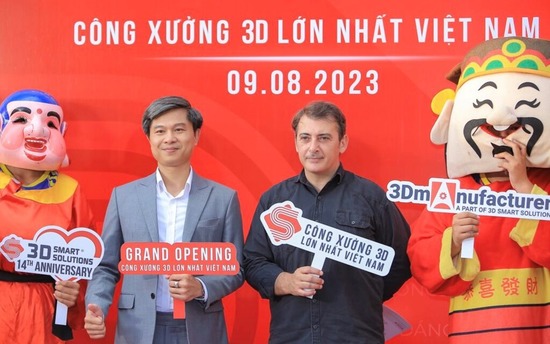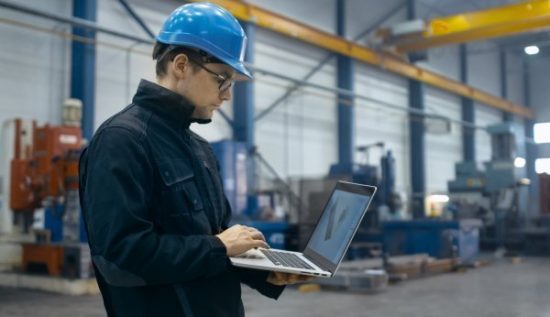After nearly one year of construction, installation and acceptance according to international standards, the 3D factory of 3D Smart Solutions Company (also known as 3DS) has been put into operation at address 58/6 Vo Van Hat, Long Truong Ward, Thu Duc City (aka District 9), Ho Chi Minh City.
Automotive Trim Developments Acquires Two Metal 3D Printers For Component Innovation
EOS, a leading supplier for manufacturing solutions through industrial 3D printing technology, revealed that Automotive Trim Developments (ATD) has installed two EOS M 290 metal 3D printers.
Heraeus AMLOY, Trumpf Open Door To Industrial 3D Printing Of Amorphous Metals
Heraeus AMLOY and Trumpf have started working together on the 3D printing of amorphous metals, also known as metallic glasses, with the aim of establishing the printing of amorphous parts as a standard production method on the shop floor by improving process and cost efficiencies.
Amorphous metals are twice as strong as steel, yet significantly lighter and more elastic. They exhibit isotropic behaviour, which means their material properties remain identical, regardless of the direction in which the 3D printer builds up the workpiece. In addition to creating highly robust parts, 3D printing also gives engineers more freedom in the design process. A number of areas could benefit from 3D printing of amorphous metals. Key examples include parts that are subject to significant stresses and lightweight design in sectors such as aerospace and mechanical engineering. These materials are also an excellent choice for medical devices due to their biocompatibility.
“3D printing of amorphous components in industry is still in its infancy. This new collaboration will help us speed up printing processes and improve surface quality, ultimately cutting costs for customers. This will make the technology more suitable for a wider range of applications, some of which will be completely new,” said Jürgen Wachter, head of the Heraeus AMLOY business unit.
“Amorphous metals hold potential for numerous industries. For example, they can be used in medical devices – one of the most important industries for additive manufacturing. That’s why we believe this collaboration is such a great opportunity to make even more inroads into this key market with our industrial 3D printing systems,” said Klaus Parey, managing director Trumpf Additive Manufacturing.
READ: Trumpf Enters The World Of Automated Arc Welding
READ: Trumpf Enables Automated Removal, Stacking of Parts

The new TruPrint 2000 3D printer from Trumpf is the ideal choice for printing amorphous metals from Heraeus AMLOY.
Amorphous metals are formed by cooling molten metal extremely quickly. A 3D printer can then build them into larger, more complex parts—something that other methods are unable to do. This opens the door to new industrial applications for amorphous metals. 3D printing also exploits the considerable potential that amorphous metals hold for lightweight design. A 3D printer only builds structures that actually help a part fulfil its function, so material use and weight are kept to a minimum. For their part, amorphous metals are very light by nature, so the combination of 3D printing and amorphous metals can reduce weight in all sorts of applications. 3D printing makes the production of amorphous parts faster and simpler in a wide range of contexts. The technology enables users to build parts in one piece instead of making components one by one and then assembling them into a finished part.
In this cooperation, Heraeus AMLOY combines its expertise in the production and processing of amorphous metals with Trumpf’s experience in additive manufacturing. Heraeus AMLOY has optimized its amorphous alloys for 3D printing and tailored the material for use with Trumpf’s TruPrint systems. The latest-generation TruPrint 2000 machine is a particularly good choice for printing amorphous metals. The machine is designed in such a way that the excess powder can be prepared in an inert gas environment for the subsequent building process. This protects the powder from any adverse influences. This is a key benefit for amorphous metals because they react so quickly with oxygen. Trumpf has also boosted the productivity of the TruPrint 2000. Two 300-watt lasers scan the machine’s entire build chamber in parallel. Using a laser focal diameter of just 55 micrometers, users can carry out both low and high-volume production of amorphous parts with extremely high surface quality. The “Melt Pool Monitoring” function automatically monitors the quality of the melt pool, so any errors in the process are spotted at an early stage.
Customers that already have a Trumpf 3D printer can now use it to process zirconium-based alloys from Heraeus AMLOY. It is also possible to order 3D-printed amorphous parts directly from Heraeus AMLOY. The two partners are also hoping to make copper- and titanium-based alloys available for 3D printing in the future.
For more exclusive news and information, visit www.equipment-news.com.
Check these articles out:
Punching Machine Adaptability: Room to Grow
BrightLine Weld – A Revolution In Laser Welding
Nissin Electric To Move Production From Thailand And Vietnam To Myanmar
Outlook For Welding And Cutting Equipment Market
PTG Introduces Powerstir Dual Weld-Head Friction Stir Welding For Electric Vehicle OEMs
Coherent Launches Turnkey Solution for Precision Metal Parts Welding
Hypertherm: FlushCut Consumables
Faster Robot Programming With Hypertherm Robotmaster Version 7.2
WANT MORE INSIDER NEWS? SUBSCRIBE TO OUR DIGITAL MAGAZINE NOW!
FOLLOW US ON: LinkedIn, Facebook, Twitter
Global Metal 3D Printer Market Outlook
The global metal 3D printer market is estimated to value US$0.8 billion in 2017 and is projected to register a CAGR of 24.7 percent in terms of value over the forecast period till 2026, according to a report by Market Research.
3D printing is a method of making three dimensional hard substances from a digital file. It is the process of laying down successive layers of material until the object is shaped in the desired form, in an additive manner. Each layer can be seen as a thinly sliced flat cross-section of the eventual object and it is an extremely high-precision manufacturing procedure.
Metal 3D printing offers various advantages over conventional manufacturing processes. With metal 3D printers, a range of products with varying designs can be printed and less materials are used which eliminates waste. Industries like aerospace, automotive, construction, medical device and consumer electronics are increasingly using this technology to produce components and parts. 3D metal printing provides aerospace and automotive industries with lightweight components which increases fuel efficiency and enable customisation in medical device manufacturing. Furthermore, Asia-Pacific is forecasted to be the fastest growing market for 3D printing metal due to rapid industrialisation and economic growth which drives the automotive, medical device, aerospace and defense industries. All these factors contribute to the rising popularity of metal 3D printers.
Key Players in the market include EOS GmbH, General Electric Company, SLM Solutions Group AG, 3D Systems Corporation, Arcam AB, Renishaw plc., DMG MORI AKTIENGESELLSCHAFT, The ExOne Company, Wuhan Binhu Mechanical & Electrical Company Limited, Xi’an Bright Laser Technologies Co Ltd (BLT), Wuhan Huake 3D Technology Co Ltd, Optomec Inc.
WANT MORE INSIDER NEWS? SUBSCRIBE TO OUR DIGITAL MAGAZINE NOW!




